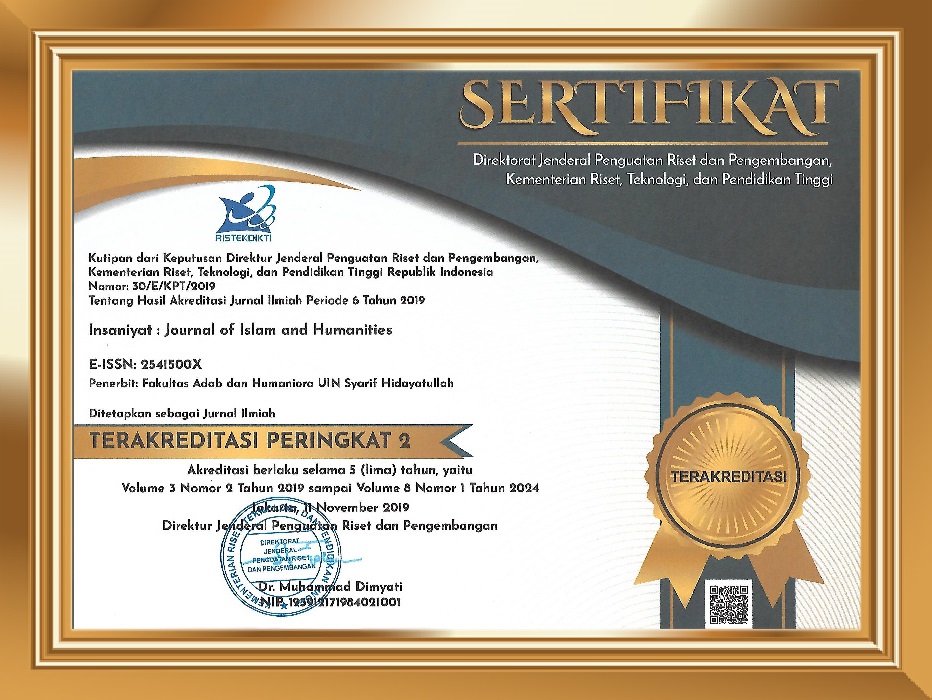Comparative Analysis of Indonesian Presidents’ Identities in Wayang during the Reformasi Era
Abstract
Keywords
References
Acri, H. C. A. (2011). From Lanka EastwardsThe Ramayana in the Literature and Visual Arts of Indonesia.
Alhumami, A. (2012). Political Power , Corruption , and Witchcraft in Modern Indonesia. University of Sussex.
Amaghlobeli, G. (2018). Types of Political Discourses and Their Classification. Journal of Education in Black Sea Region, 3(1). https://doi.org/10.31578/jebs.v3i1.117
Anderson, B. R. O. G. (2009). Mythology and the Tolerance of the Javanese. Equinox Publishing.
Basuki, R. (2006). Panakawan ’ s Discourse of Power in Javanese Shadow Puppet during the New Order Regime : From Traditional Perspective to New Historicism. A Biannual Publication on the Study of Language and Literature, 8(1), 68–87.
Clark, M. (2001). Shadow boxing : Indonesian writers and the Ramayana in the new order. Davidson, J. S. (2018). Indonesia:Twenty Years of Democracy. In Elements in Politics and Society in Southeast Asia. Cambridge University Press. https://doi.org/10.1017/9781108686518
Dijk, T. A. V. (2003). The Discourse-Knowledge Interface. https://doi.
org/10.1057/9780230514560_5
Dijk, T. A. V. (1997). What is Political Discourse Analysis? Belgian Journal of Linguistics,11, 11–52. https://doi.org/10.1075/bjl.11.03dij
Doran, T. (2011). Absent Voices: Experience of common life in world history. The Sītā
Mystique.http://orias.berkeley.edu/summer2011/Summer2011Home.htm
Ford, M. & P. (2014). Beyond Oligarchy: Critical Exchanges on Political Power and Materal Inequality in Indonesia. Indonesia (Beyond Oli).
CSEAPP. Keeler, W. (1987). Javanese shadow plays,Javanese selves. Princeton University Press.
Miyake, Y. (1990). Javanese kings , dramas , and women.
Mujani, S., & Liddle, R. . (2010). Personalities, parties, and voters. Journal of Democracy, 21(2), 35–49.
Nagy, T. C. (2006). Indonesian wayang during the “guided democracy,” “new order,” and “reformasi” eras: negotiating politics, religion, and entertainment. Miami.
Pausacker, H. (2004). Javanese Wayang Presidents as Punakawan : Portrayal of National Leaders as Clown-Servants in Central Javanese Wayang. Journal of Southeast Asian Studies, 35(2), 213–233. https://doi.org/10.1017/S0022463404000128
Ras, J. J. (1976). The historical development of the Javanese shadow theatre. Review of Indonesian and Malaysian Affairs, 10(2), 67.
Salleh, M. H. (2009). Words Over Borders: Trafficting Literatures in South East Asia. Asiatic, 3(2), 1–24.
Sari, B. I. (2014). The framing of an Indonesian leader : The Jakarta Post and the Jakarta floods. Massey University, Wellington.
Sears, L. j. (1996). Shadows of empire:Colonial discourse and Javanese Tales. Duke University Press.
Soedarsono. (1985). Wayang Wong. Gadja Mada Press.
Tara, Y. (2018). Wayang dan Kisah Sukses SBY. Kompasiana. https://www.kompasiana.com/terejana/5a921db35e1373170345a683/wayang-dan-kisah-sukses-sby
Williams, C. (2009). Thailand. Lonely Planet.
Yousof, G., & Khor, K. (2017). Wayang Kulit Kelantan : A Study of Characterization and Puppets. Asian Theatre Ournal, 34(1).
DOI: 10.15408/insaniyat.v5i1.15718
Refbacks
- There are currently no refbacks.






